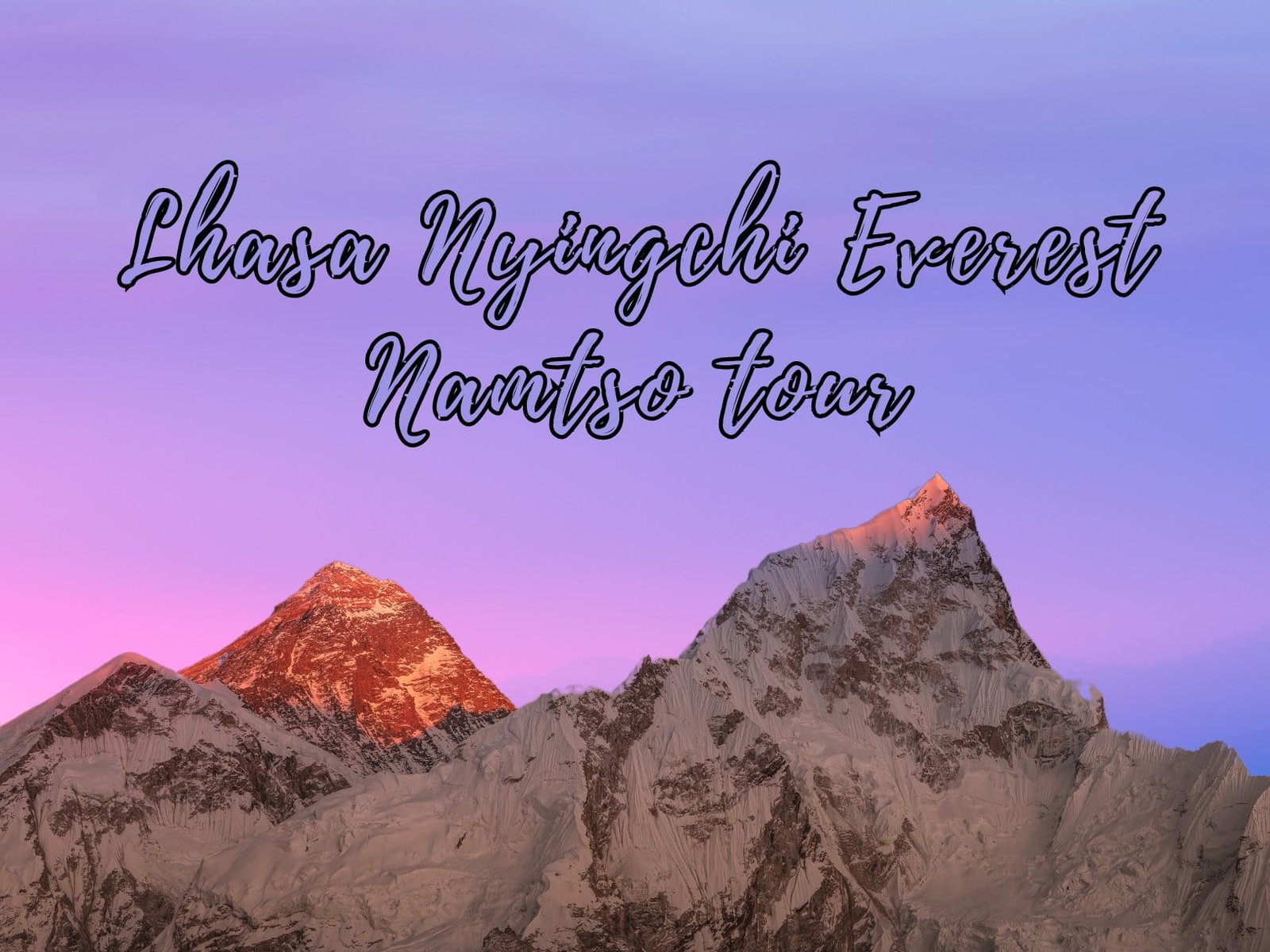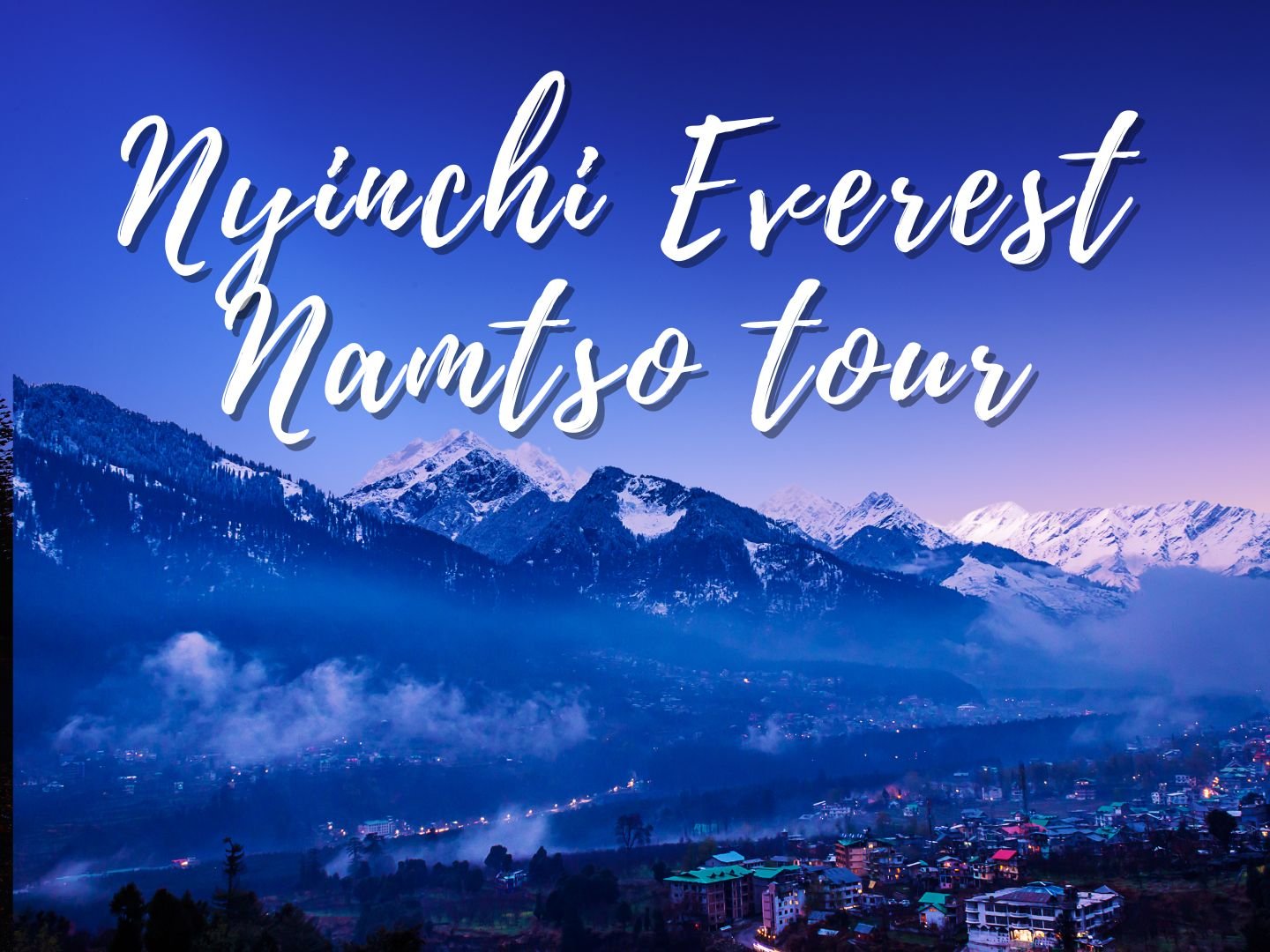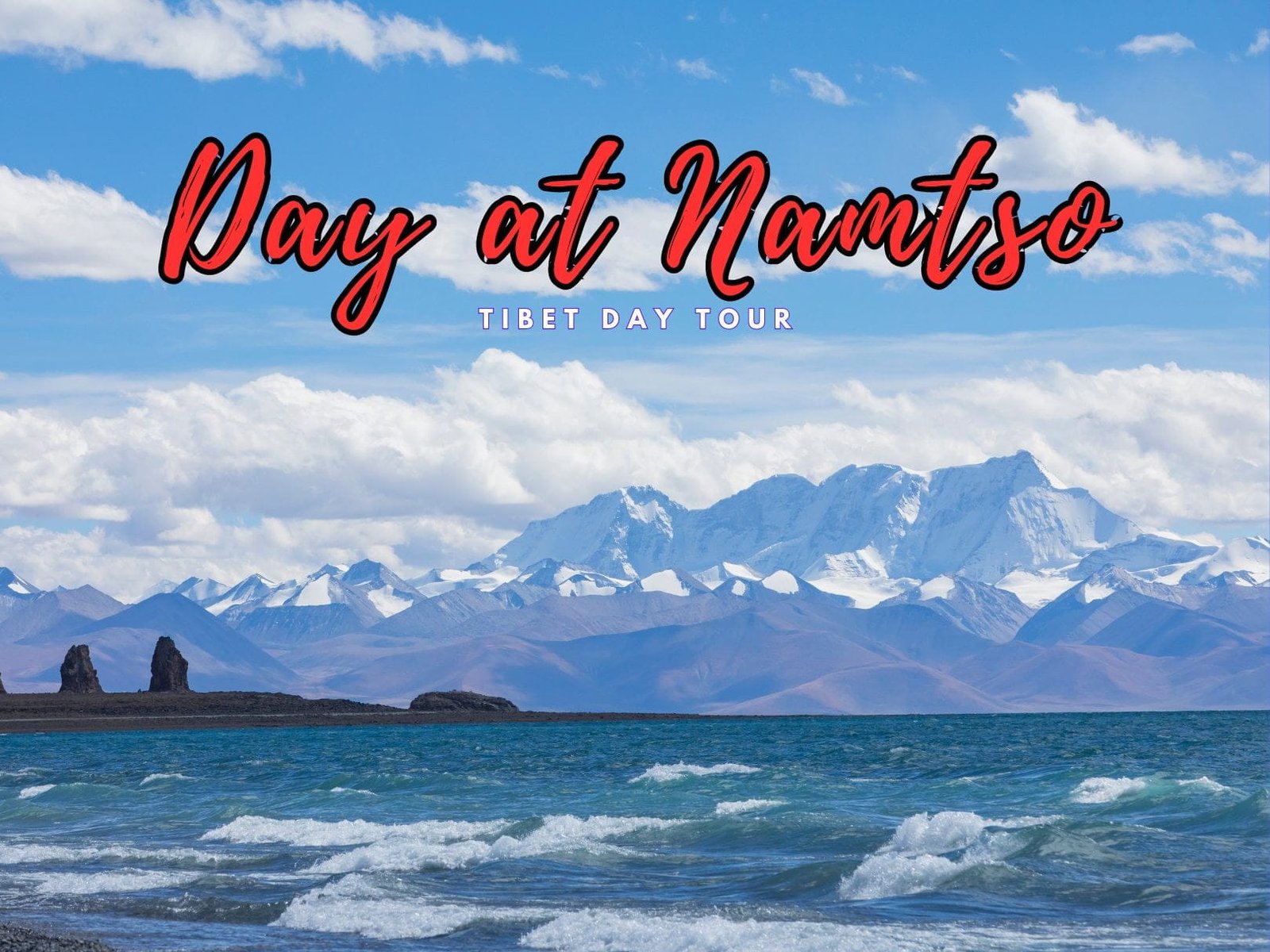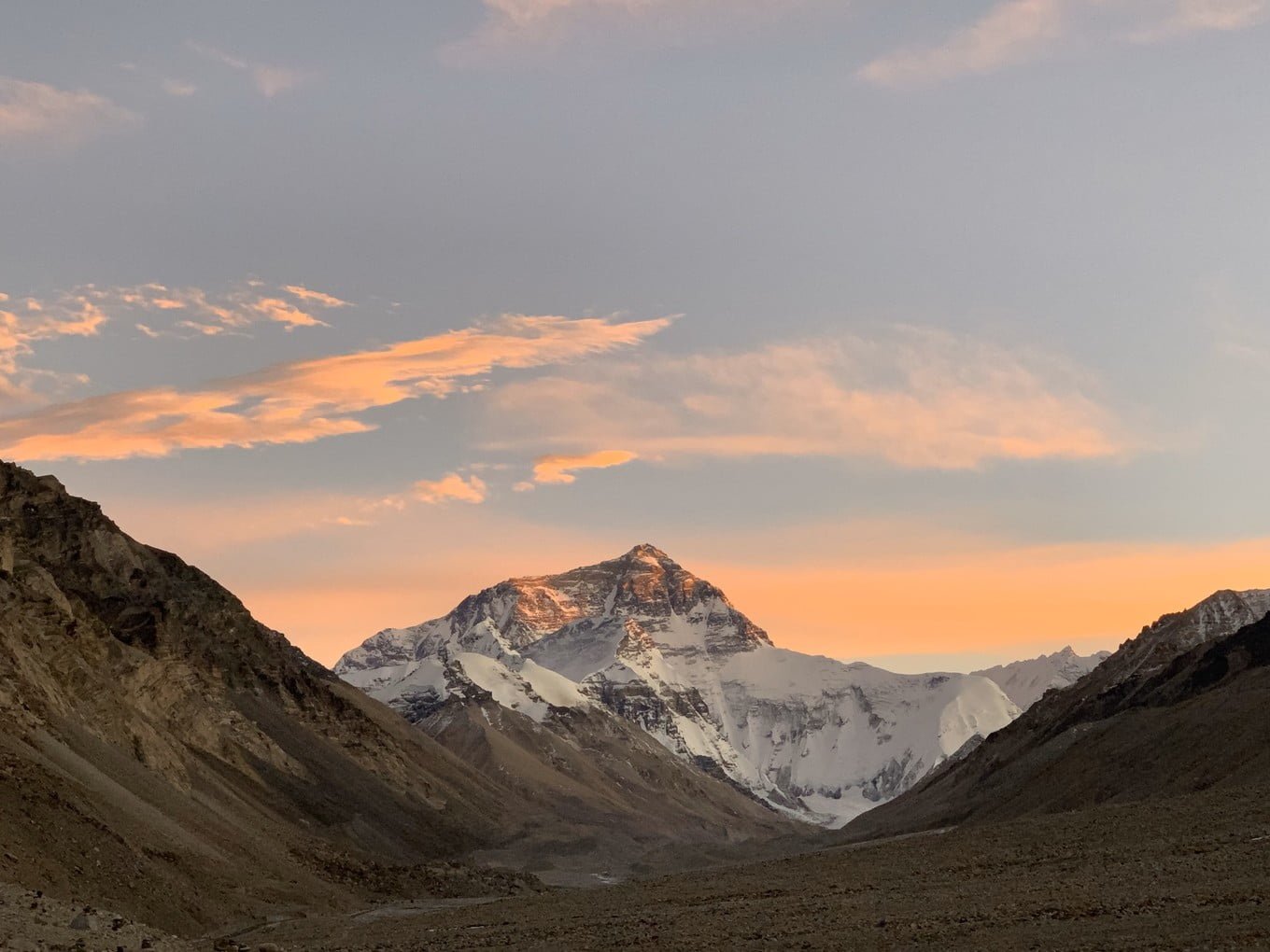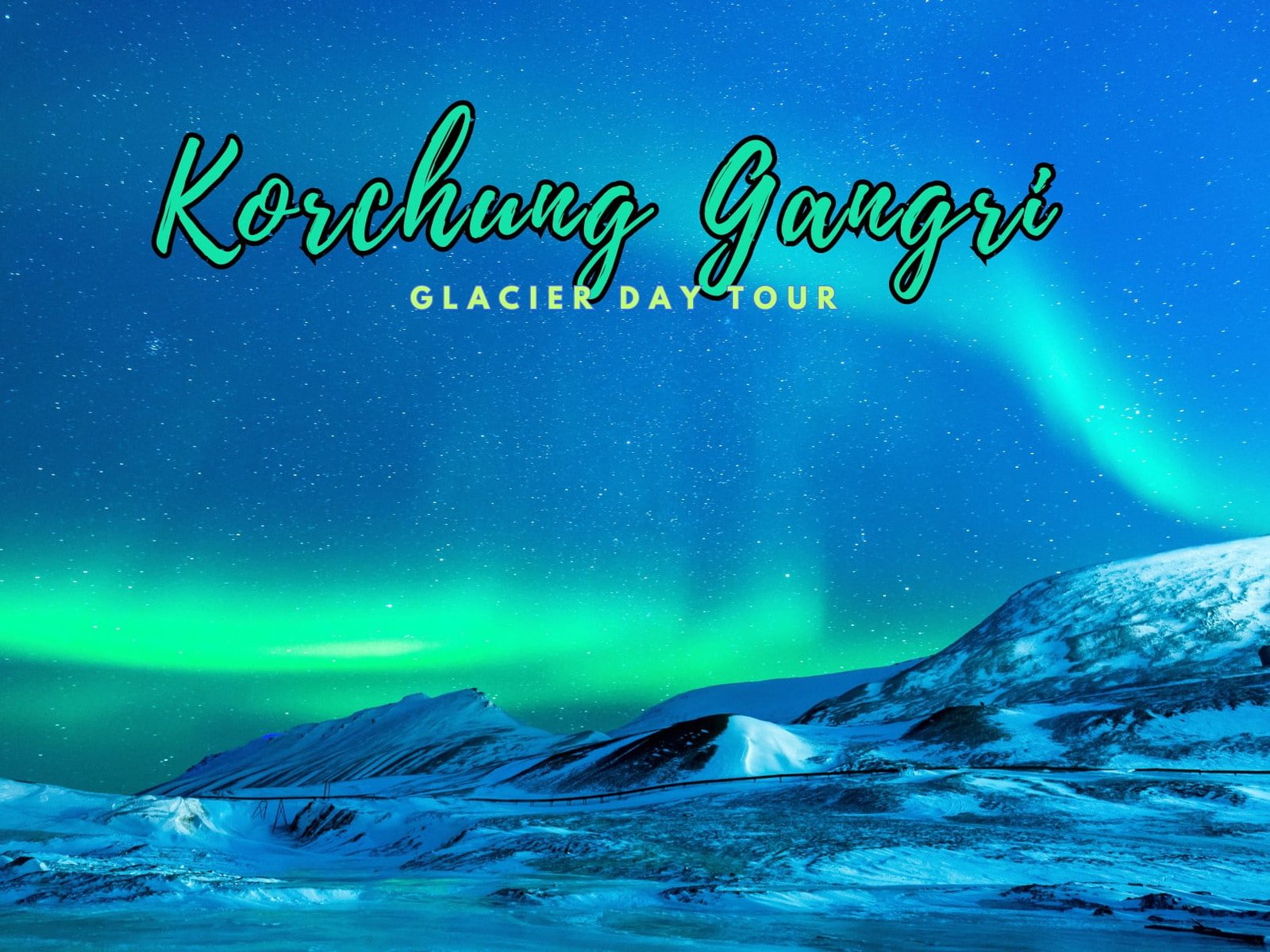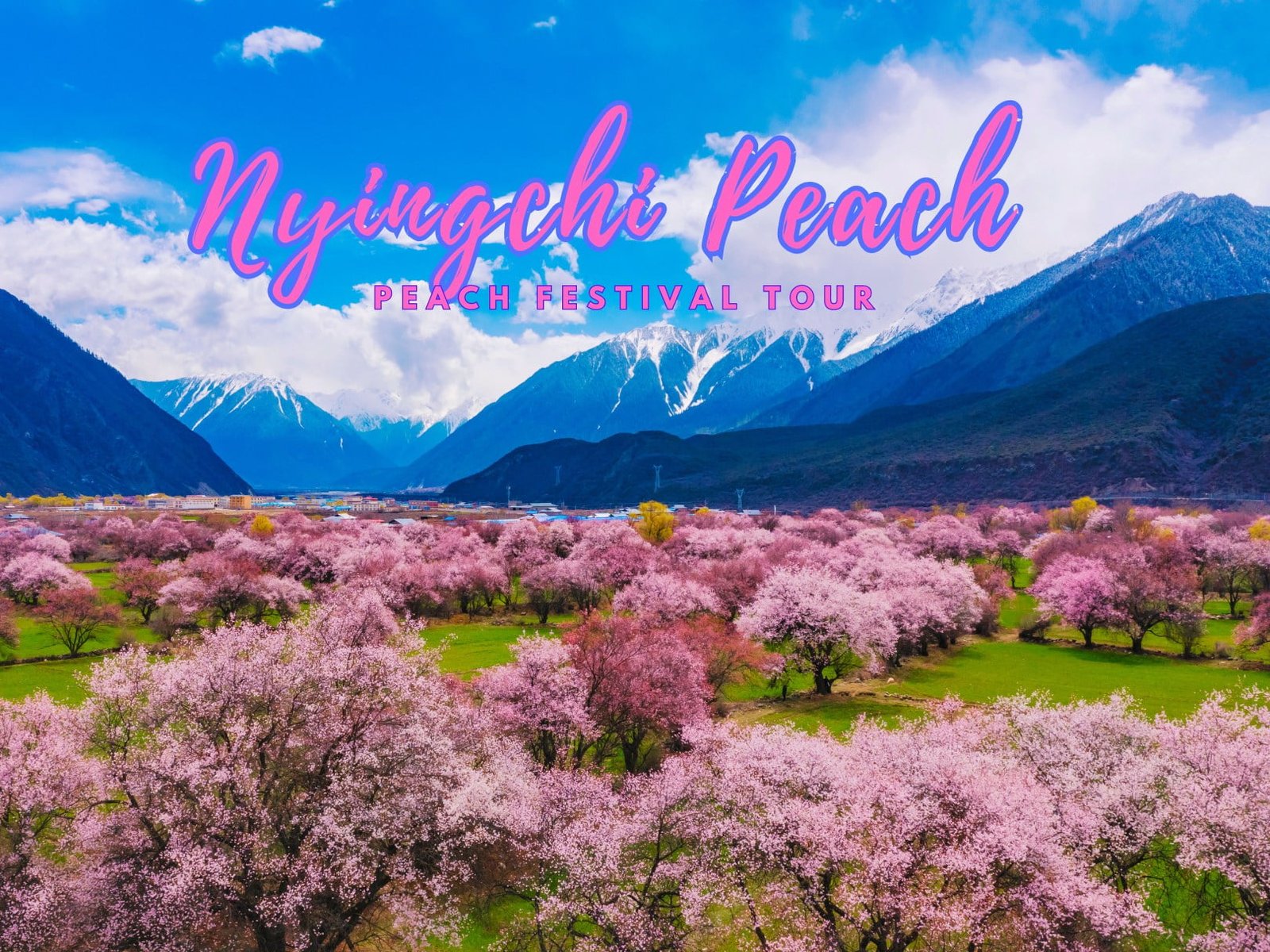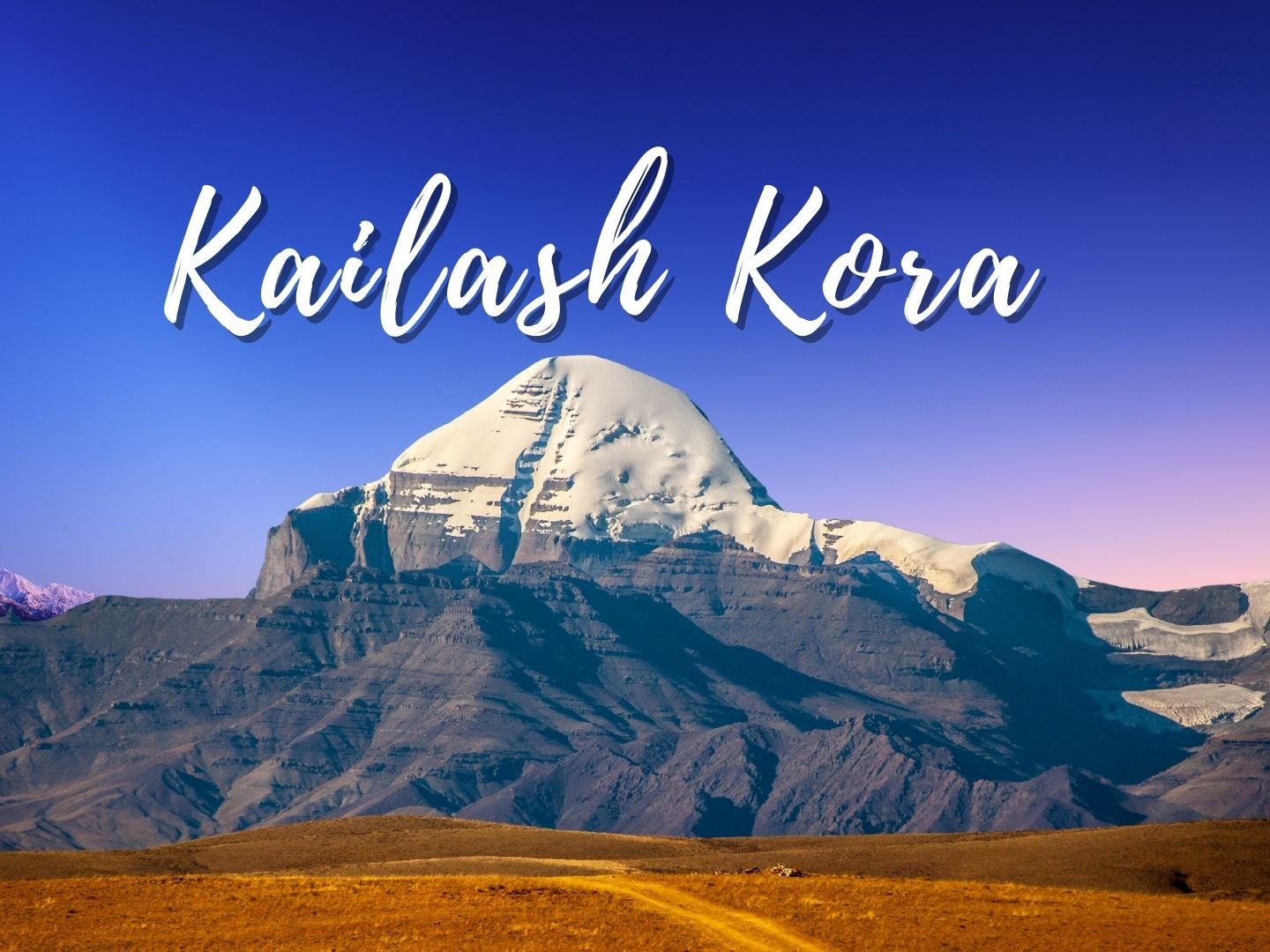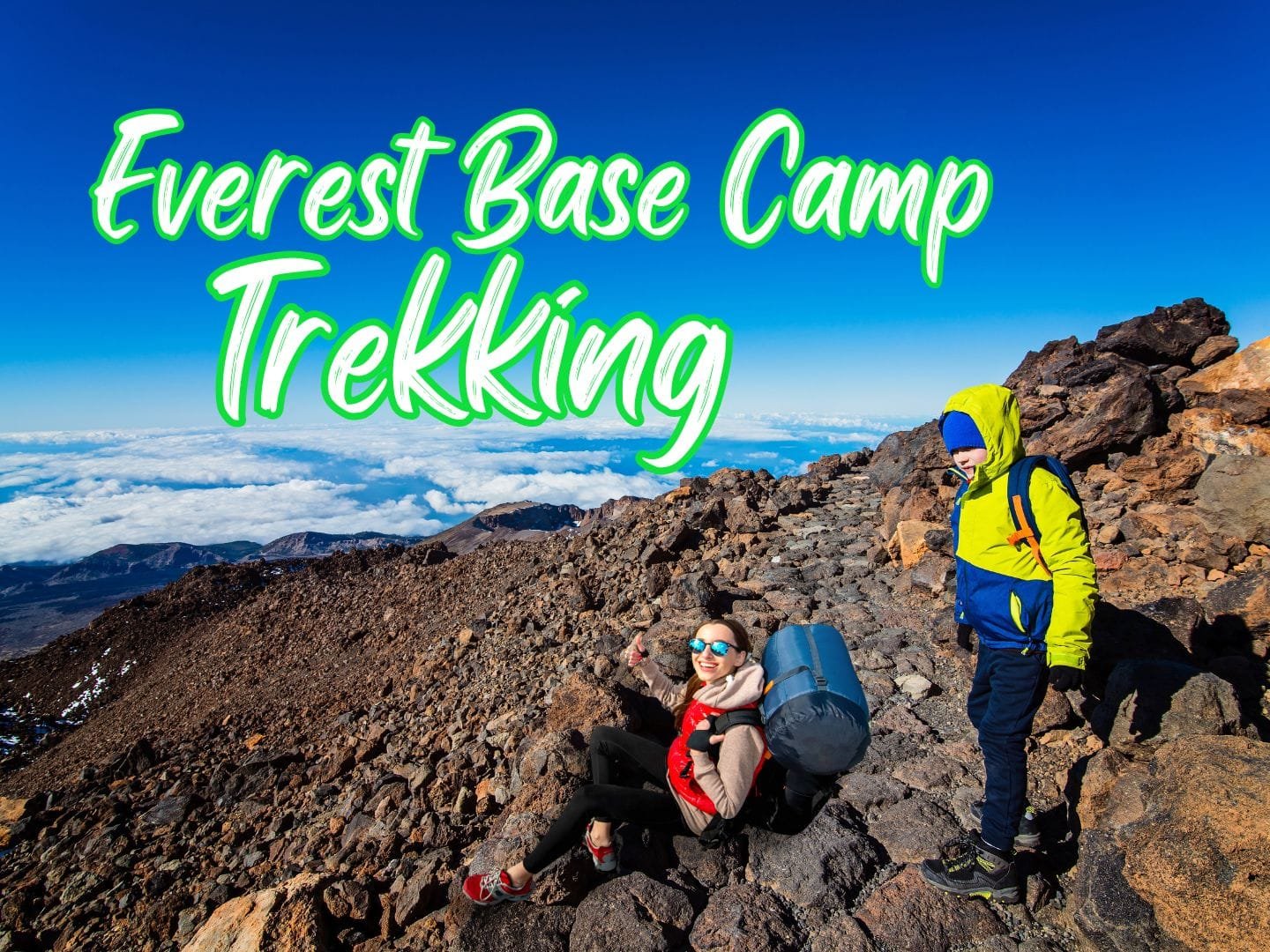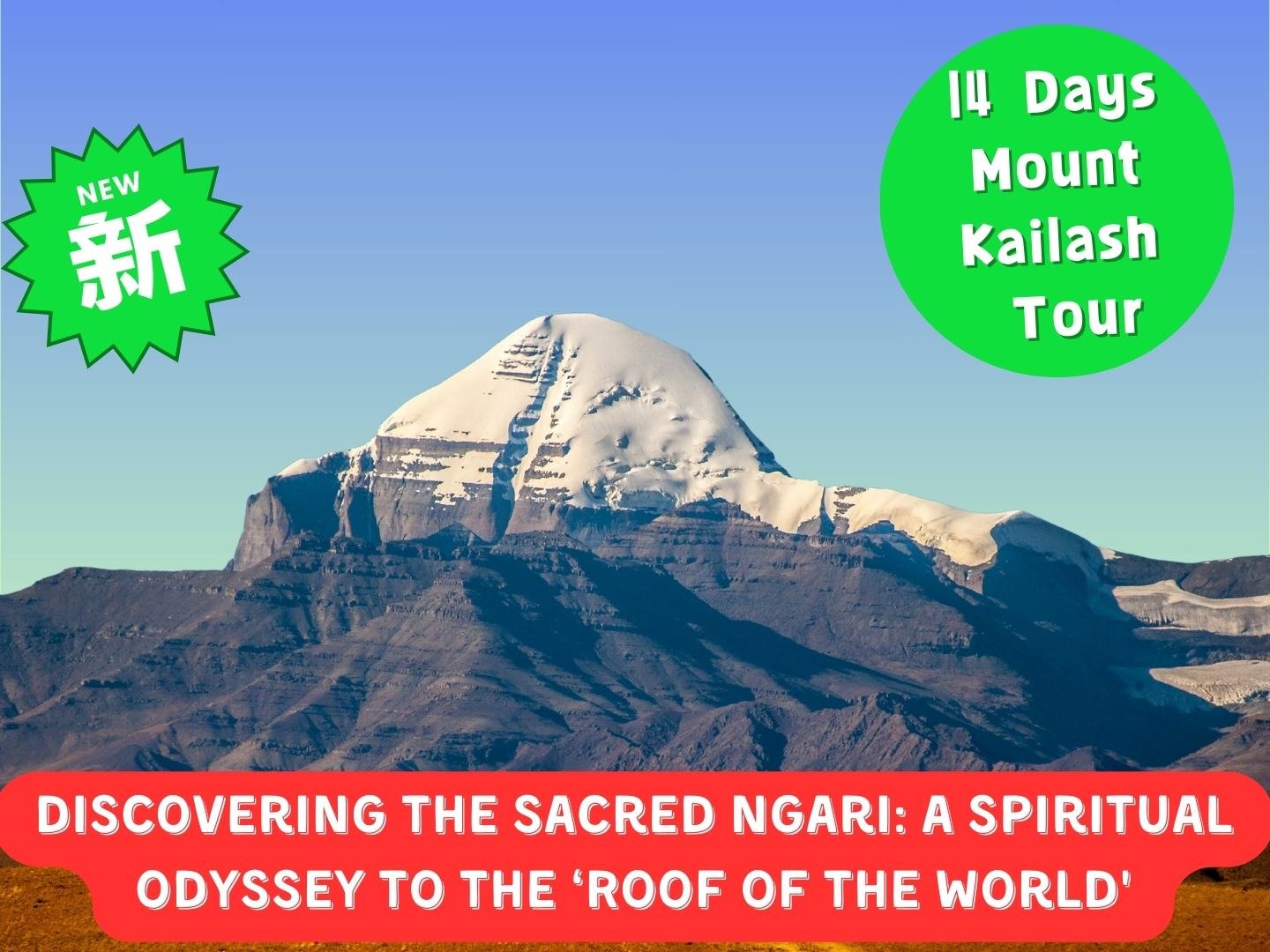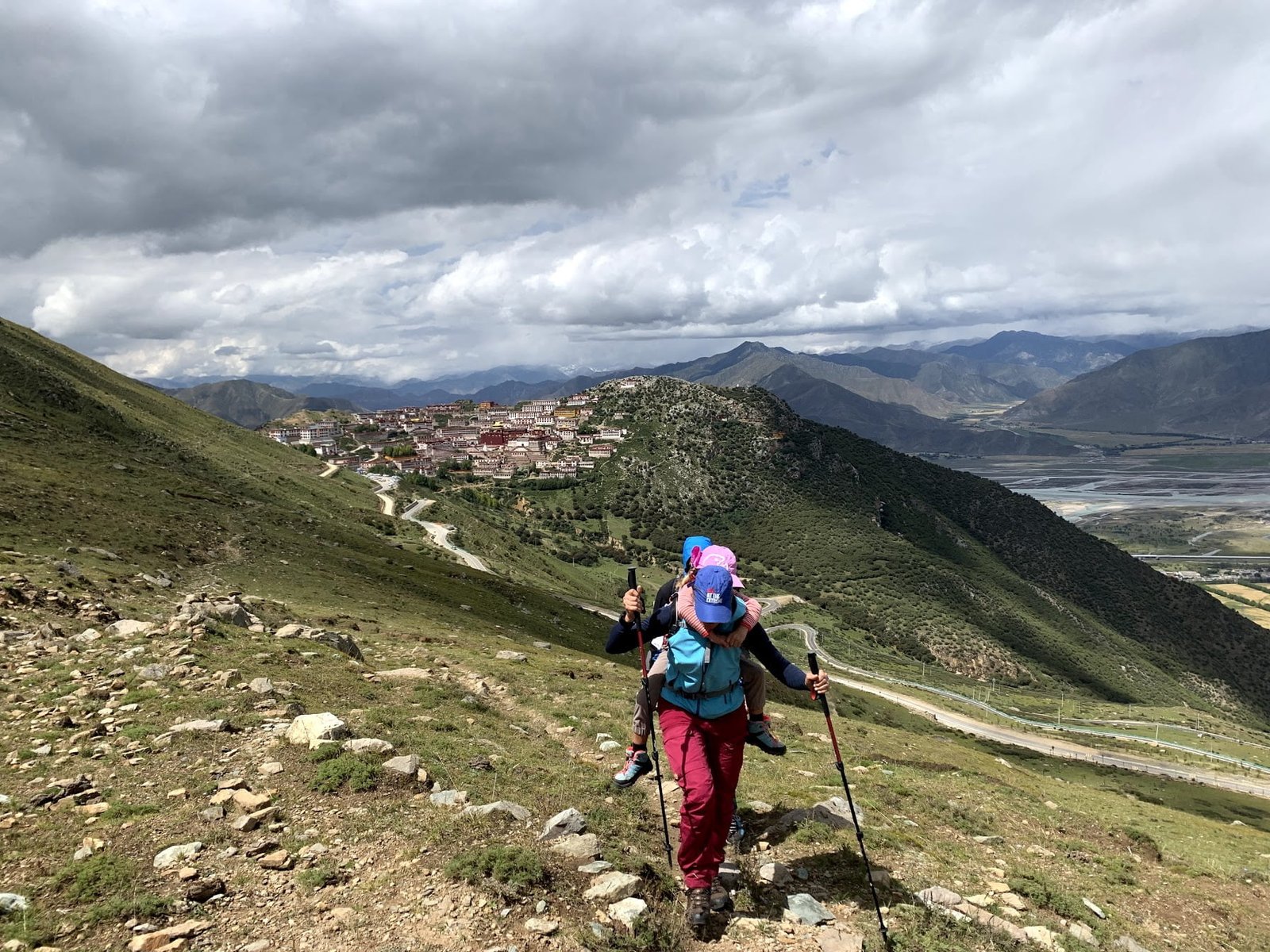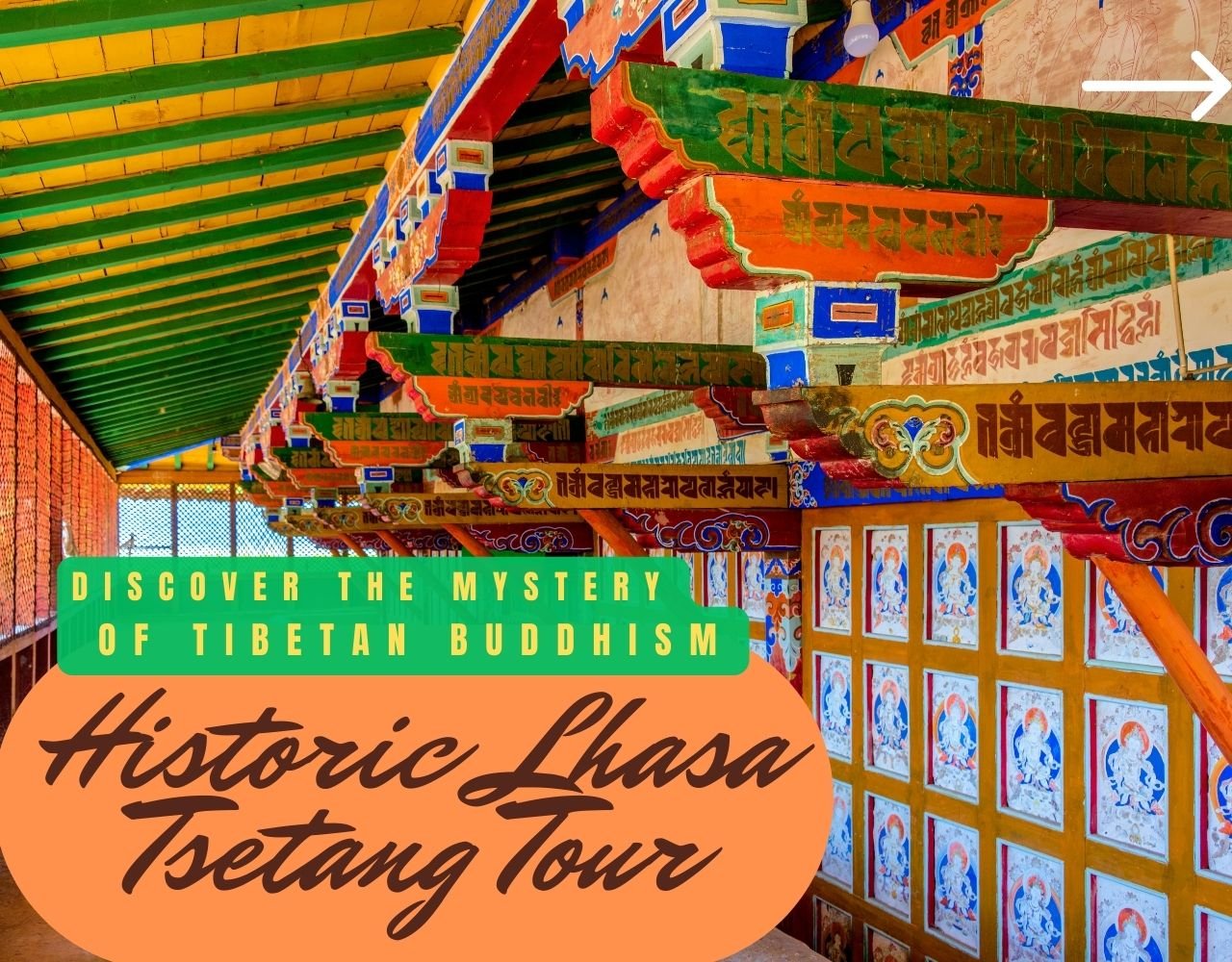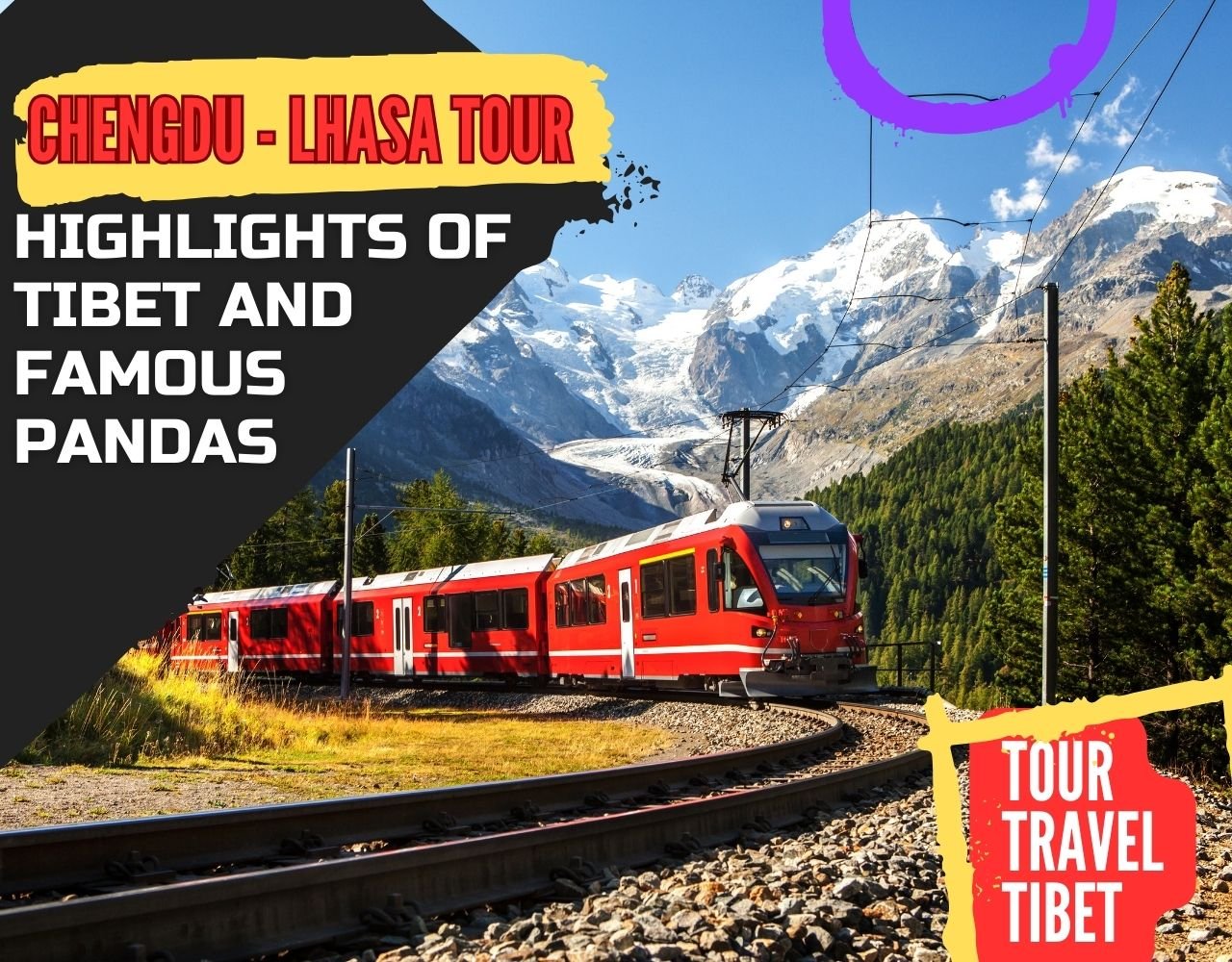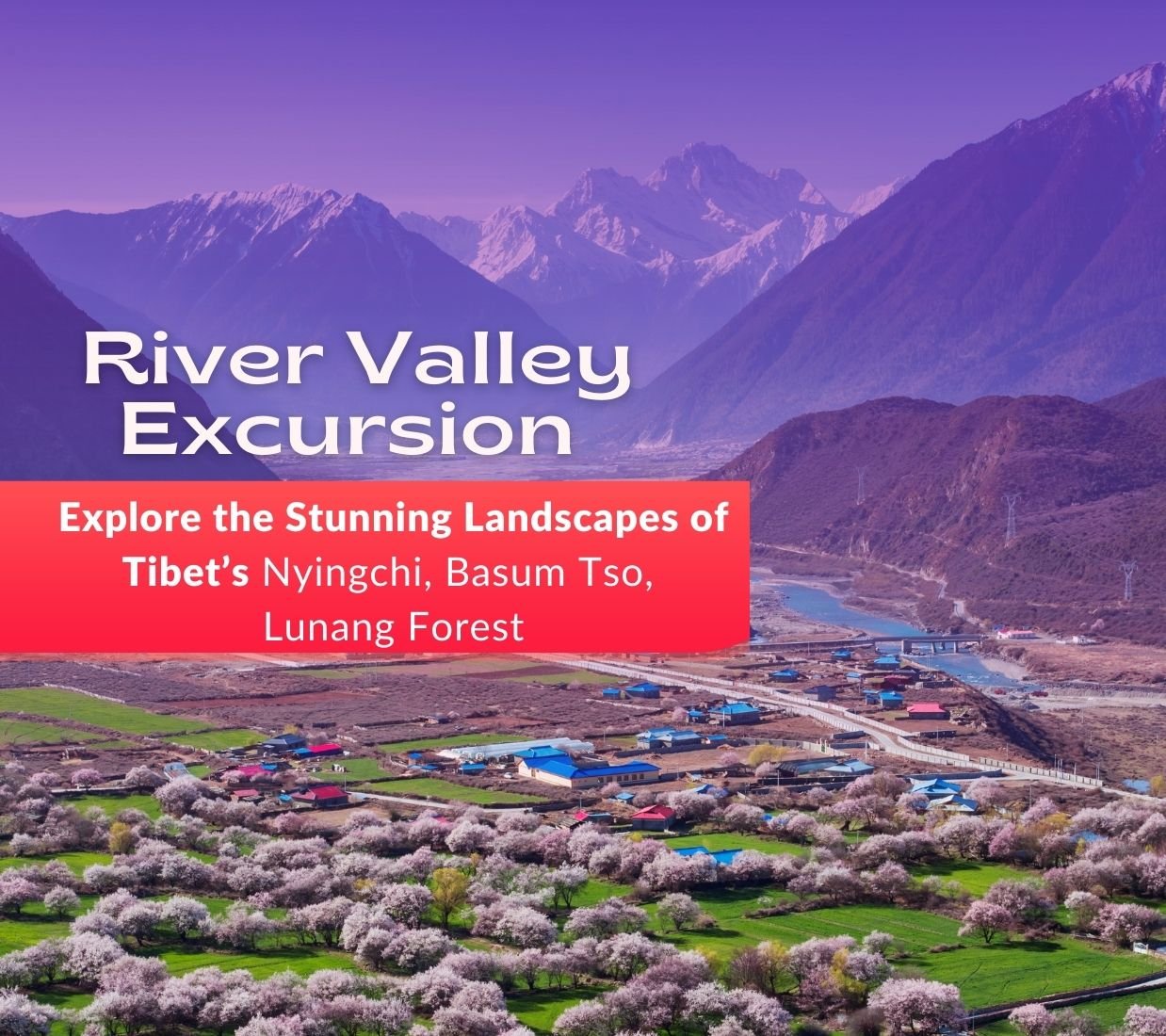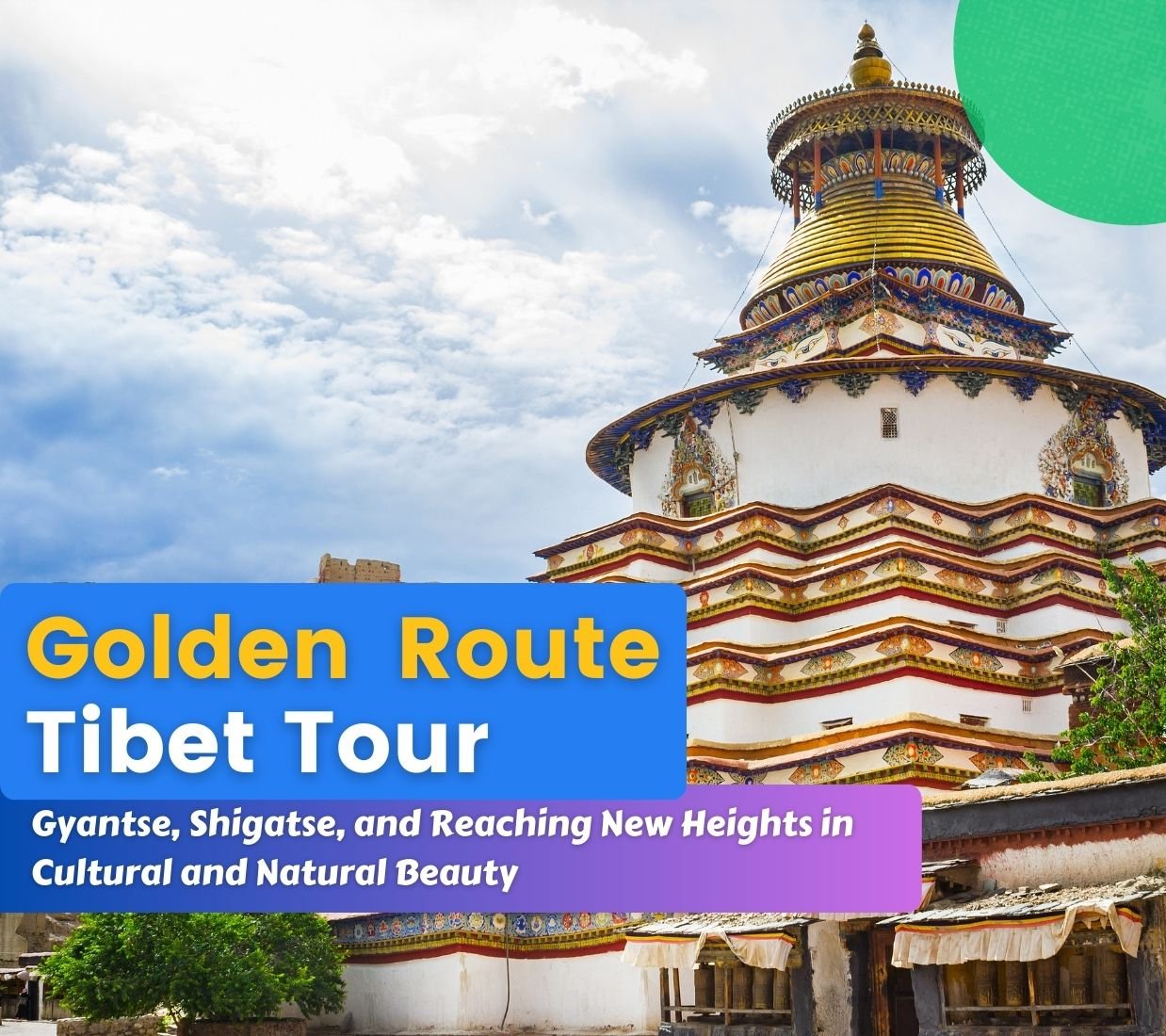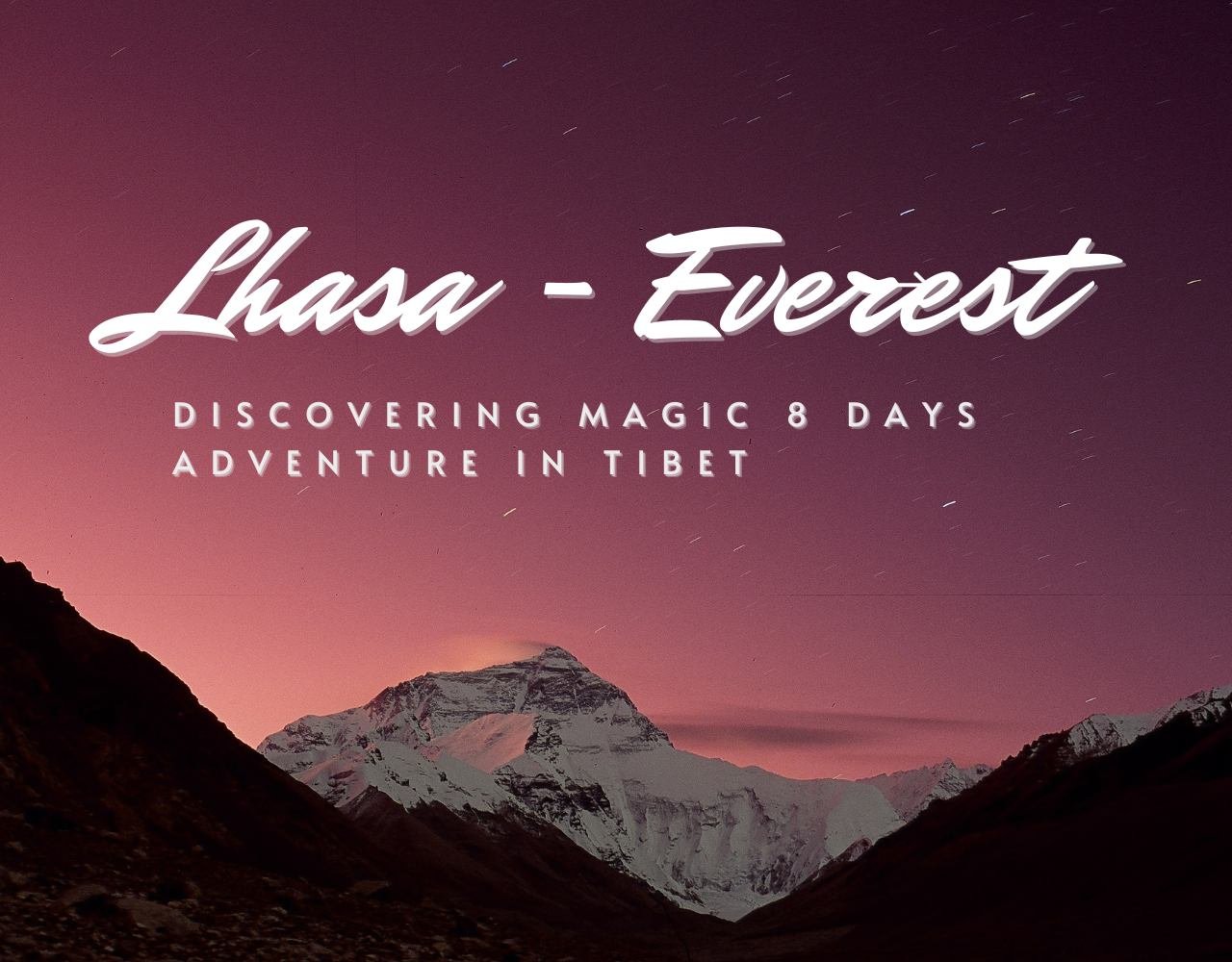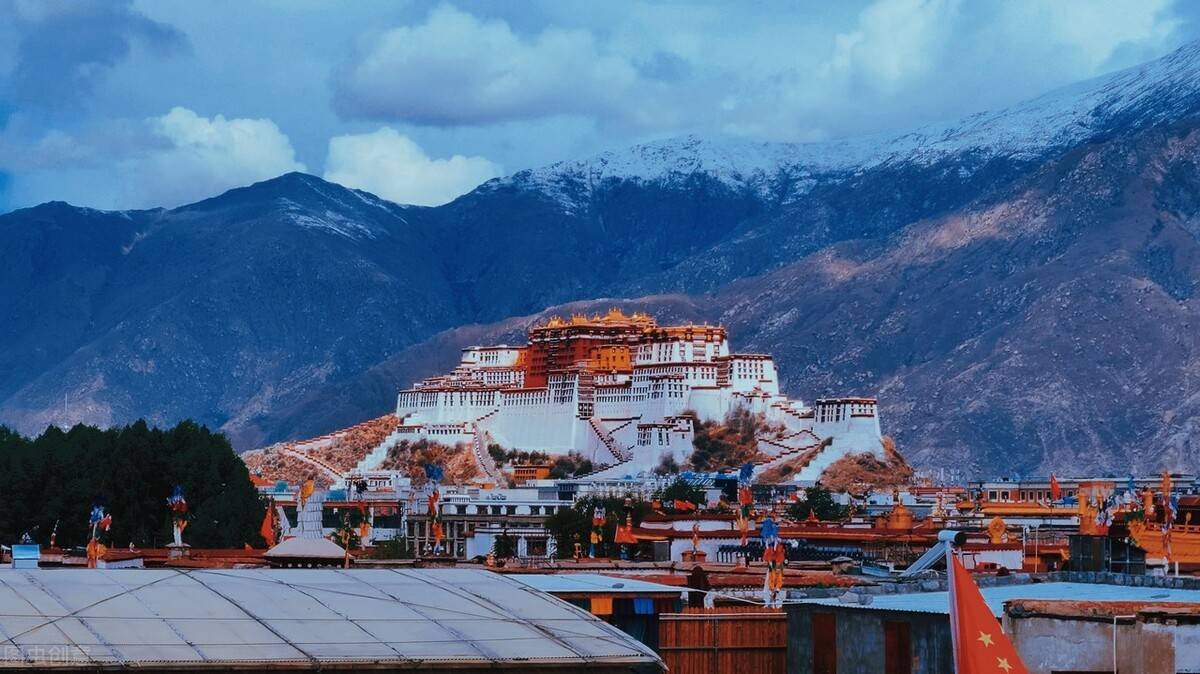Going to Tibet is a dream destination for many. First-time visitors may have questions about entering Tibet, such as necessary preparations, required items, travel precautions, and eligibility for old people and children. Specific measures to prevent altitude sickness will also be addressed. In this article, we have compiled answers to 100 commonly asked questions about travelling to Tibet, providing a comprehensive overview of the region.
Frequently Asked Questions for Traveling to Tibet
1. What are the symptoms of altitude sickness?
When entering a plateau area like Tibet for the first time, you may experience altitude sickness, which can range in severity. Mild symptoms include headache, tinnitus, shortness of breath, general weakness, insomnia, and others. In more severe cases, you may also experience nausea, vomiting, diarrhoea, palpitation, and a purple complexion. Generally, these mild symptoms will go away within 1-2 days after entering Tibet. Severe altitude sickness can lead to cerebral oedema and pulmonary oedema. It is important to quickly move to a lower altitude area, as failure to do so may result in shock and potentially fatal outcomes.
After entering Tibet, if experiencing altitude sickness, you can alleviate the symptoms by taking American ginseng, inosine tablets or oral liquid, Nuodikang capsules, Gaoyuanan, and other medications. For headaches, Baifuning and other pain-relieving drugs can be taken. While glucose is not specifically meant for altitude sickness, it can effectively relieve its symptoms. Additionally, drinking butter tea, if one can get accustomed to its taste, is also an effective remedy for altitude sickness. However, it is crucial to prioritize maintaining a regular diet and rest, nurturing an optimistic mindset, and seeking medical attention for oxygen therapy in severe cases.
3. What kind of medicine can I take to prevent a high reaction? How far in advance to eat?
There are several anti-altitude sickness medications available, such as Rhodiola rosea capsules or oral liquid. Taking Rhodiola rosea root soaked in water one week before entering Tibet can effectively alleviate altitude sickness. Other known medications for this purpose include Gaoyuanan, Gaoyuan Shuning, Nuodikang, and Gaoyuankang (western medicine). It is recommended to take these medications at least three days in advance and to follow your doctor’s instructions.
4. Why is it best not to go to Tibet if you have a cold?
A cold can cause inflammation in the trachea and lungs, weaken the body’s resistance, reduce oxygen levels in the plateau, and potentially lead to bronchitis, pulmonary oedema, or pneumonia. It can also cause hyperactivity, which is not advisable. Moreover, curing a cold becomes challenging once caught in the plateau.
5. Can I come to Tibet if I am not in good health? Who are not suitable to come to Tibet?
Most people can travel to Tibet unless they have serious diseases. Conditions such as respiratory, tracheal, cardiovascular, heart, and mental diseases disqualify individuals from entering Tibet. Therefore, those with severe hypertension, heart disease, asthma, bronchitis, diabetes, and colds are not allowed to enter Tibet. It is advised to undergo a heart and lung examination before visiting Tibet to confirm if any of the mentioned serious diseases are present. It is currently known that patients with epilepsy and schizophrenia should avoid travelling to high-altitude areas in Tibet. Moreover, pregnant women should refrain from travelling to Tibet.
6. Is it better to drive by yourself or take a train or plane to Tibet?
If the economy is affluent, it is advisable to fly to Tibet initially. It is incorrect to claim on the Internet that “flying into Tibet will cause altitude sickness.” Altitude sickness is not caused by flying but rather varies from person to person based on their own constitution. If you have sufficient time, you can opt to take the train to Tibet. However, the train journey from cities like Beijing, Shanghai, and Guangzhou to Tibet takes over 40 hours. Upon witnessing the breathtaking scenery along the Sichuan-Tibet line, you have the option to split the train journey into two sections.
You can pause in Xining or Xi’an for a day and then purchase a train ticket from Xining to Tibet. (Friendly reminder: Xining has an excessive number of scalpers who sell overpriced train tickets.) Another alternative is to travel to Tibet by self-driving. Individuals who choose to drive to Tibet must possess proficient driving skills due to the challenging road conditions. However, I personally do not recommend driving to Tibet alone due to numerous safety hazards. If any issues arise during the journey, it can become troublesome if help is not readily available.
7. Does one need to exercise before going to Tibet?
Many people fear altitude sickness and believe they must enhance their physical fitness before travelling to Tibet. However, this approach is incorrect as altitude sickness is unrelated to physical strength. Prior to entering a higher altitude, avoid intentional exercise. Individuals who regularly exercise should cease their routine two weeks before visiting Tibet. Exercise increases oxygen consumption, resulting in increased bodily stress at higher altitudes, which can lead to altitude sickness. Without proper adaptation and preparation, sudden entry into areas above 5,000 meters above sea level should be avoided to prevent unforeseen accidents.
8. Can I go to Tibet in winter? Will it be very cold?
Although winter is the low season for tourism in Tibet, some tourists still visit because of the warm sunshine, pure snow-capped mountains, and authentic holy city. The temperature in Lhasa, Tibet during winter is about -10° to 10°. It is warm in sunny places during the day, but cold when the sun goes down. However, the dry climate in Lhasa makes the coldness similar to that of a southern winter, so a down jacket or jacket is sufficient. In remote areas of Tibet, such as Ngari and Nagqu, the winter temperature is below -10°.
9. What should I pay attention to when I first arrive in Tibet?
When entering Tibet, slow down your walking pace and rest adaptively in the hotel to avoid excessive fatigue. Avoid taking frequent baths during the initial days and use a quilt while sleeping at night to prevent catching a cold and experiencing adverse reactions. Follow a regular and light diet, drink suitable amounts of water, refrain from smoking and drinking, and consume more fruits and foods rich in vitamins.
10. Besides Tibetan food, what other dishes do you have in Tibet?
Sichuan cuisine is popular in Tibet, along with Tibetan food. Halal noodle restaurants are also widespread in Lhasa streets and alleys. Additionally, there are establishments offering Nepalese, Indian, and Western cuisine. Generally, there are dishes from the mainland. However, only Dicos and KFC serve Western-style fast food, not McDonald’s and Pizza Hut.
11. What snacks are there in Tibet?
Tibetan snacks consist of noodles, dumplings, buns, sweet tea, butter tea, jelly, cold noodles, French fries, yak yoghurt, beefcake, milk dregs, and yoghurt ice cream. Additionally, Lhasa has a significant number of Sichuanese restaurants where authentic Sichuan snacks can be found in the alleys.
12. I only have a few days in Tibet, where should I choose to go?
For a brief and enjoyable journey, start by spending two days in Lhasa to experience the sacred ambiance of the city. Afterwards, explore nearby areas worth visiting such as Nyingchi (three days), Namtso (one or two days), and Shannan (two days). If you have ample time, consider opting for the Shigatse Mount Everest Four-Day Tour, Bomi Ranwu Lake Four-Day Tour, Ali South to South Exit, or the Ali Grand Ring Road.
13. How many days does it take to travel the Sichuan-Tibet line on foot?
The Sichuan-Tibet line consists of a south line measuring 2,140 kilometers and a north line spanning 2,412 kilometers. Typically, individuals traverse the south line on foot or by car, completing the journey in approximately one week. Currently, it is advised against young, unaccompanied women embarking on a hike along the Sichuan-Tibet line, particularly if they are not adept at navigating Tibet. Ultimately, one must assess the level of risk independently.
14. How about the accommodation along the Sichuan-Tibet line?
There are numerous small counties along the Sichuan-Tibet line, where you can find star-rated hotels with decent accommodations (though not comparable to mainland standards). Additionally, there are many affordable guest houses and backpackers’ accommodations available to meet the diverse needs of tourists. If you are unable to reach your intended county seat due to unforeseen circumstances, you can opt to stay overnight at the homes of Tibetans, who will warmly welcome you.
15. How many days does it take to ride from Chengdu to Tibet?
Cycling the Sichuan-Tibet route typically takes 15 to 30 days, depending on personal fitness, preferences for sightseeing along the way, road conditions, and other factors. On average, most individuals complete the journey in 20 days. It is advisable for young women who have no prior experience in Tibet to consider alternative means of entry.
16. How to go downtown from Lhasa Railway Station?
There are buses No. 1, No. 13 and No. 14 from Lhasa Railway Station to the urban area. The fare is 1 yuan. You can also take a taxi for about 30-40 yuan. It is only 10-20 yuan if you share a car with others!
17. How to get downtown from Lhasa Airport?
There is a direct civil aviation bus from Gonggar Airport in Lhasa to the urban area, the fare is 30 yuan, and it takes about an hour and a half by car. In addition, there are private vans that can be rented, the price is about 50 yuan, and you can also take a taxi (TAXI) to the city by yourself, but the price is much higher, 300 yuan/trip.
18. Are there many Internet cafes in Lhasa?
There are numerous Internet cafes in Lhasa, ensuring you have ample options for web browsing. The hourly rate is 4 yuan, and the Internet speed is satisfactory.
19. What is the condition of star hotels in Lhasa? What about the price?
Lhasa has a range of star-rated hotels available, including five-star, four-star, two-star, and one-star options. Prices for five-star hotels vary depending on the season, with standard rooms costing roughly 800-1600 yuan. Four-star hotels offer standard rooms at approximately 400-1000 yuan, while two-star and one-star hotels have prices ranging from 100-300 yuan. To secure a room during peak season, it is advisable to book at least ten days in advance. Recently, there has been a significant increase in the number of four- and five-star hotels in major cities throughout Tibet. For those with a comfortable budget, it is recommended to choose hotels that provide better accommodation for a pleasant and comfortable travel experience.
20. Are there international youth hostels in Lhasa? what is the price
Lhasa has three international youth hostels: Dongcuo on Beijing Road, Sonam on Deji South Road, and Pingcuo on Qingnian Road. They are conveniently located near the Jokhang Temple and attract a large number of backpackers. These hostels offer more affordable rates compared to mainland youth hostels.
21. How to find someone to charter a car with you in Lhasa?
Many backpackers don’t like to join a group in a travel agency. They would rather choose to find a few like-minded people to charter a car together, which is more free. Generally, there are three main ways to find someone to carpool. One is to contact a professional travel car rental company and ask them to release the information about carpooling together; the second is to post on the Tibet Travel Forum; the third is to post a note in a youth hostel. Post a small advertisement in the area. Warm reminder, you must remember to look for vehicles with legal operating licenses. Lhasa’s tourist buses have licenses starting with Tibetan AL , so don’t try to be cheap for a while.
22. What kind of Tibetan meals are there?
Tibetan cuisine features stewed yak meat with radish, sheep blood sausage, lamb chops, cold Tibetan pig skin, sausage rice, tsampa, chicken with cordyceps matsutake, fried barley with butter, auspicious conch, yoghurt bibimbap, beef curry rice, and dry beef.
23. The sun in Tibet is very strong, how can I protect myself from the sun?
The sun in Tibet emits intense ultraviolet rays. If you fail to adequately protect yourself, you will endure not only tanning but also sunburn. Thus, it is essential to don a sun hat, sunglasses, and a face shield or mask. It is advisable to wear long-sleeved shirts and pants during the summer season. Additionally, using a sunscreen with a high SPF of 50 is recommended, and you may also consider applying lipstick with sunscreen properties.
24. Planning a trip to Tibet. Need info on summer temperature & clothing?
Tibet is relatively cool in summer. The temperature is basically around 25 degrees during the day and around 10 degrees at night. The temperature difference between morning and evening is large. Wear long sleeves during the day, it is best not to wear short-sleeved shorts to avoid sunburn. It is necessary to add more clothes at night to avoid catching a cold. It is difficult to cure a cold in plateau areas and it will be more troublesome.
25. When is the best time to travel to Tibet?
May to September is the prime tourism season in Tibet, with pleasant temperatures. However, it is also the busiest time, with visitors coming from May to October. For a more authentic experience of Tibet, it is recommended to visit from November to May the following year. Although it can be cold at night, the daytime offers comfortable and delightful sunshine, creating a unique and alluring atmosphere. The editor believes that the months of April-May and September, after the start of school, offer the best value for money. During these times, all the tourist attractions in Tibet are open, there are fewer tourists, and the scenery is enjoyable, making it ideal for off-peak travelers.
26. Which places do I need to apply for a border defense permit when going to Tibet?
- Shigatse area: Zhongba County, Saga County, Nyalam County, Tingri County, Kangma County, Yadong County, Gangba County, Dingjie County, Jilong County
- Shannan City: Cuona County, Longzi County, Luozha, Langkazi County
- Nyingchi City: Milin County, Lang County, Zayu County, Medog County
- Ali District: Pulan County, Zada County, Ritu County, Gar County
27. How much is the ticket for the Potala Palace? Is it good to buy?
Tickets for the Potala Palace are priced at 200 yuan during peak season and 100 yuan during off-season. In off-season, tickets can be purchased directly at the ticket office for same-day visits. However, during peak season, it is challenging to purchase tickets as there is a daily limit of 2300 tickets, with travel agencies accounting for 1600-1700 tickets, leaving only a limited number for individual tourists. To buy tickets during peak season, you must bring your ID card to the west gate of the Potala Palace one day in advance to obtain a ticket purchase certificate, which allows you to officially purchase tickets for the following day. If time is a concern and you do not want to miss out, your options are to purchase high-priced “scalper tickets” or join a group tour organized by a local travel agency.
28. How to apply for a Nepal visa in Lhasa?
Nepal has two consulates in China for visa applications, one in Beijing and the other in Lhasa. The Nepal Consulate in Lhasa is near Norbulingka. Bring a valid passport, a copy of the passport, 2 photos with a white background, and obtain an application form from the staff. Complete the form on-site and submit it to the visa officer along with the required information. Typically, the visa can be obtained on the afternoon of the following day. Application hours are from 10:00 am to 12:00 pm, Monday to Friday, and visa collection is at 4:00 pm, Monday to Friday. Visa fees are as follows: 175 yuan for 15 days, 280 yuan for 30 days, and 700 yuan for 3 months. Embassy phone number: 0891-6822881.
29. How to go to Nepal from Lhasa?
There are three options to travel from Lhasa to Nepal. The first option is to fly directly from Lhasa Gonggar Airport to Kathmandu, the capital of Nepal. The flight takes approximately two and a half hours, but it is also expensive. The second option is to take the international bus from Lhasa to Kathmandu, which costs 580 yuan. The third option, if time is not a concern, is to carpool with someone to Zhangmu, which costs around 350-400 yuan, and then proceed through Zhangmu.
30. Can Tibetans understand Chinese?
Young Tibetans generally understand Chinese well, but many older Tibetans in remote areas struggle to comprehend it.
31. How is the phone signal in Tibet?
In most parts of Tibet, mobile phones have a signal, especially in populated towns. However, the signal may be affected by weather conditions and is unavailable in uninhabited areas of northern Tibet. China Mobile has the strongest signal in Tibet, followed by China Telecom, and China Unicom has the weakest signal, particularly outside urban areas of Lhasa.
32. Which banks are more in Lhasa? Is it convenient to withdraw money?
In Lhasa, there are several branches of the Bank of China, Postal Savings Bank, Agricultural Bank of China, and China Construction Bank. These banks have ATM machines, allowing for convenient cash withdrawal. It is advisable to carry a CCB savings card and an Agricultural Bank credit card for both cash withdrawal and card payments. ICBC, on the other hand, only has one branch in Lhasa, with limited ATM availability, so it is not recommended. Additionally, China CITIC Bank and Minsheng Bank have recently opened branches in the past two years. Tibet Bank is a local bank primarily catering to local users.
33. Which mainland cities have flights to Lhasa?
Beijing, Chongqing, Chengdu, Diqing, Guangzhou, Kunming, Lanzhou, Shanghai, Xi’an, Xining, basically some big cities in China have flights to Lhasa, and more and more direct flights. If there is no direct flight, it is generally transferred from Chengdu, Chongqing, and Xi’an airports.
34. Can I get a discount if I use my student ID card to buy tickets at scenic spots in Tibet?
By showing your student ID card at the Potala Palace in Lhasa, you can receive a discount of up to 50% on tickets for the scenic spots. However, this discount is not applicable at other scenic spots in Tibet. The scenic spots in the autonomous region are beyond the reach of ordinary tourists.
35. Where is the best place to buy Tibet tourist souvenirs?
For inexpensive accessories and gadgets, visit Barkhor Street, but be cautious as many items are made in the mainland. For more expensive purchases like turquoise and beeswax, head to the shops on Bajiao Street. The stalls there are not of great quality, so consider buying them in souvenir shopping malls where the quality is guaranteed. To purchase Thangka, visit a specialty store. For Tibetan medicine, cordyceps, snow lotus, saffron, and more, visit the pedestrian street (Yutuo Road) in front of the main gate of Jokhang Temple, where you’ll find a higher number of reputable stores and a wider selection.
36. I want to buy a Tibetan knife. Where is the best Tibetan knife? How much is it?
Tibetan knives from Lazi and Nanmulin are renowned in Tibet for their excellent quality and meticulous craftsmanship. They are entirely handmade. The price of these knives varies significantly based on factors such as size, age, material, and decorations. Typically, a purely handmade Tibetan knife costs a minimum of a few hundred yuan, while those with gold and silver scabbards or gemstone inlays are considered priceless.
37. Is Dzi bead real?
Genuine dzi beads are scarce and costly, often retained by Tibetans rather than being sold.
38. What specialities are worth buying in Tibet?
Tibet’s special products include Tibetan carpets, knives, air-dried yak meat, silver ornaments, ox bone combs, incense, hada, turquoise, rhodiola rosea, cordyceps, thangka, highland barley wine, saffron, matsutake, snow lotus, and more. Choose according to your preferences.
39. Where can I buy real Cordyceps?
There are many stores specializing in Cordyceps on the pedestrian street (Yutuo Road) in front of the main gate of Jokhang Temple. It is safer to buy there, and it is best to bring a knowledgeable friend with you. People who sell Cordyceps on the roadside are dressed like Tibetans, but basically the Cordyceps are fake, or they are not produced in Tibet.
40. Can I go to see the sky burial? where to look
Sky burials are strictly regulated in Tibet. In 2006, the government issued the “Interim Regulations on the Administration of Sky Burials,” which explicitly prohibits onlookers, photography, and video recordings. Despite this, some tourists still secretly visit sky burials out of curiosity. I believe this behavior is disrespectful and dangerous. If caught photographing or recording, the consequences could be disastrous for the family of the deceased. The Zhigongti Temple is renowned for its celestial burial platform, one of the largest in the world. If you truly wish to witness a sky burial, it is advisable to seek the consent of the family members. Approach it with respect and a solemn understanding of death.
41. What is Debate?
Debating scriptures is a debate training conducted by Tibetan Buddhist monks on some Buddhist issues. Generally, two people form a group. One person stands and the other sits. Take countless Q&As to get to the bottom of things. Debating scriptures is a monk’s daily homework, which is equivalent to testing the results of his usual study. Currently, in Lhasa, people usually go to Sera Monastery to read the Debates.
42. Can lamas get married?
Tibetan Buddhism has five sects: Nyingma, Sakya, Kagyu, Gelug, and Benbo. While some believe that only the Gelug sect permits marriage, this is a misconception. Within Tibetan Buddhism, there are two types of lamas: monks and lay lamas. Monks receive a Buddhist education in temples and adhere to precepts from a young age, while lay lamas have not grown up within temple environments and have not taken on such precepts. As a result, lay lamas are allowed to marry and have children.
43. What taboos do Tibetans have?
Tibetans don’t eat donkey, horse and dog meat, and some areas don’t eat fish. When drinking butter tea, the host pours the tea, and the guests can only take it when the host holds it in front of them with both hands. Be sure to take it with both hands; Passing by religious facilities such as monasteries, mani heaps, pagodas, etc., you must go around from left to right, and those who believe in Bon religion go around from the right; turn the prayer wheel clockwise, and the Bon religion reverses; do not touch the top of other people’s heads with your hands ;Do not pick up and deliver items with one hand; Do not use paper with Tibetan characters as toilet paper or to wipe things; After entering the herdsman’s tent, men sit on the left side and women sit on the right side, do not mix and sit; Do not throw bones in the fire Middle: When a sick person or a woman gave birth in a Tibetan family, signs were made in front of the door, some lit a fire outside the door, and some put tree branches or pasted a red cloth strip at the door. Outsiders see this sign, do not enter.
44. What ethnic minorities are there in Tibet?
Besides Tibetans, Tibet is also home to the Monba, Lhoba, and Teng ethnic groups.
45. Can I take pictures in the Potala Palace?
It is not allowed to take pictures inside the Potala Palace, but you can take pictures when climbing the steps outside the palace.
46. Can I take pictures in the temple?
Taking pictures is generally not allowed in temples as it goes against Buddhist etiquette.
47. How about the prices in Tibet?
Because Tibet is located on a plateau, the products are not rich, many things are shipped from the mainland, the logistics cost is expensive, the price of daily necessities is much more expensive than the mainland, and the cost of food is similar to the level of Beijing, Shanghai and Guangzhou, and even in some In more remote areas, prices will be higher. Fruit prices in Tibet are also much higher than those in the Mainland.
48. What’s interesting about Linzhi?
The main scenic spots in Nyingchi are Basongcuo, Taizhao Ancient City, Xiuba Millennium Castle, Yarlung Zangbo Grand Canyon, Nanyigou, Giant Berlin, and Lulang Forest Sea. Moreover, you can hike the Yarlung Zangbo Grand Canyon, Jiabawa Peak, and Midui Glacier. Nyingchi is also home to the Monba, Teng, and Lhoba communities.
49. Are there many bars in Lhasa?
There are quite a lot of bars in Lhasa. The bars that donkey friends often go to are concentrated on Beijing Middle Road. In an alley on Danjielin Road next to the Jokhang Temple Square, there is a bar street. There are more than ten bars with different styles. On the road, there are also many bars such as Low House, Nian, and Wet Bridge, and some youth hostels also have small bars.
50. Where is Maggie Ami? Is it expensive?
Maji Ami is an eye-catching yellow house on Bajiao Street. If you ask Tibetan young people, they can give you directions. Due to its great reputation, Meimei is considered a place frequented by the bourgeoisie, so the prices are naturally high. However, if you’re not on a tight budget, it’s worth experiencing. The atmosphere is good, but the food is average. The hospitality of this store has declined in recent years. If possible, there are many renowned Tibetan restaurants near the Jokhang Temple, such as Xueyu Restaurant and Namased Restaurant.
51. Is butter tea delicious?
Generally, most people cannot appreciate the taste of buttered tea and find it unpleasant. However, there are individuals who are open to it initially and develop a liking for it. It is worth giving it a try as it can effectively alleviate altitude sickness.
52. What should I do if my nose keeps bleeding after arriving in Tibet?
Due to the dry climate in Tibet, many people will have more or less nose bleeding after coming here, but don’t worry, you can go to the hospital or pharmacy and ask the doctor to prescribe some ointment for lubricating the nasal cavity, and it will be fine. If the bleeding is severe, we should pay attention to whether there are other reasons and pay attention to it.
53. Does it often rain in Tibet? Should I bring an umbrella and raincoat?
The rainy season in Tibet is from June to September, but rain gear is unnecessary during the day. Tibet primarily experiences rainfall at night, while the sun shines brightly during the day. Raincoats and umbrellas are not required during the dry season.
54. What are the most commonly used Tibetan sentences?
It is very necessary to know a few words of Tibetan when you come to Tibet. At any time, a word of Tashi Dele (good luck) can resolve all embarrassments and misunderstandings. In addition, there are some common expressions that are very useful, such as Tuji (thank you), such as Suodebo Yinbai (how are you), Mingkare (what’s your name), Kalipei (goodbye), Quanta (sorry), Mindu (no), Ajia (for Tibetan married women) title, which means elder sister), Pumu (the name for unmarried girls, which means girl), and Gela (the name for older Tibetan men).
55. What month is the most suitable for hiking in Medog?
The best time to hike Medog is from late August to early October. From October to May, the temperature drops, the weather becomes unpredictable, and heavy snow blocks the mountains, leading to potential accidents. June, July, and early August are rainy seasons, making hiking challenging and hazardous due to slippery roads, landslides, and leeches.
56. What equipment should I bring for hiking in Medog?
One set of assault underwear, fleece underwear, quick-drying underwear, two sets of raincoats and underwear, ID card and border defence card, one pair of high-top hiking shoes and one pair of high-top military liberation rubber shoes, two pairs of thick insoles, and stockings Two pairs of chemical fibre socks, leggings, hat, windproof headband, non-slip gloves, about 45 litres of mountaineering bags, trekking poles, backpack rain cover, dozens of plastic bags, a roll of wide tape, rubber bands, some quick buckles, Yunnan Baiyao spray (white bottle), anti-mosquito spray, various commonly used medicines, band-aids, headlamps, lighters and cigarettes (used to deal with leeches), needles and threads, kettles, salt, sugar, compressed biscuits, air-dried beef, For chocolates, cameras, spare batteries, and waterproof mobile phones, you must use China Mobile’s mobile phone number in the end. Unicom basically has no signal, so remember.
57. Are there many places to eat and stay on the Xinjiang-Tibet Line?
The Xinjiang-Tibet route is the most challenging of all the routes to and from Tibet. The food and accommodation conditions along the road are less convenient compared to the Sichuan-Tibet and Yunnan-Tibet routes. There are numerous uninhabited areas with no shuttle buses available. If you are driving, there are no issues with finding food and lodging. However, if you are riding, it is essential to bring your own tent, sleeping bag, and sufficient food, particularly water. Once you reach no man’s land, you must rely on self-sufficiency for eating and lodging.
58. Which are the four sacred mountains that Tibetans often say?
Meili Snow Mountain is located in Deqin County, Yunnan; Animaqing is located in Maqin County, Guoluo Tibetan Autonomous Prefecture, Qinghai Province; Duoxiang.
59. Which lakes are the holy lakes in Tibet?
Tibet has three sacred lakes: Manasarovar, Namtso, and Yamdrok, with Manasarovar being the largest.
60. Can I take photos of worshipers? Is it impolite?
Many tourists who came to Tibet were shocked by the pious pilgrimage at the gate of the Jokhang Temple, and couldn’t help taking out their cameras to record them one by one. However, this is very impolite. Most worshipers do not want others to take pictures of themselves out of curiosity. If it is a close-up, it is best to communicate with the person being photographed in advance. Sending them photos is also a must.
61. Where can I buy highland barley wine made by Tibetans?
Tibetans brew a delicious highland barley wine that is mellow, sweet, and sour. However, not all highland barley wines are of good quality. The first and second varieties are excellent, while the third and fourth are bland. Finding good highland barley wine in the market is challenging. Generally, there are numerous types of wine available in the alleys of Bajiao Street. For a superior highland barley wine, visit the bar street in front of the Jokhang Temple. There is a Tibetan tavern where locals frequently gather to drink, and you can also purchase it to go.
62. What should I do if my skin is very dry in Tibet?
The climate in Tibet is dry. Many inland people, especially those from the south, feel dry skin and dry lips when they come to Tibet. It is best to use some moisturizing creams and lotions that are more moisturizing and oily. In the morning, you can not wash your face or simply wash it with water. You can use oily lip balm for dry lips. If you can adapt to the taste of butter tea, drink more butter tea, which can effectively relieve altitude sickness.
63. Is there a place to develop photos in Lhasa? How is the effect?
There are multiple photo-developing spots in Lhasa, particularly the station to the west of the Potala Palace and various locations on Beijing Road. The printing effect is comparable to the mainland.
64. What are the dangerous sections of the Sichuan-Tibet line?
The Sichuan-Tibet line has the title of “the line of death”, and the danger is self-evident, but the scenery along the way is so beautiful that many people still take the risk to “walk Sichuan-Tibet”. After years of repairs, the Sichuan-Tibet line is not so terrible today, but there are still many mudslides and landslides. Among them, there are two particularly difficult and dangerous sections: Tongmai natural danger, but it is not very dangerous during the non-rainy season; Yela Mountain Ninety Jiudaoguai, the zigzag road is steep and rugged, so be very careful.
65. Is it easy to find a job in Lhasa?
Lhasa, being a tourist city, has a high employment demand primarily in the service industry. The predominant job roles include salespersons and waiters, along with a few positions in state-owned enterprises. Moreover, local travel agencies in Tibet occasionally hire recent graduates for a period of six months.
66. Where can I rent bicycles in Lhasa?
Renting a bicycle in Lhasa is delightful. There are multiple bicycle rental shops on Beijing East Road. Moreover, youth hostels like Fengma Feiyang and Balangxue offer car rental services for a daily rate of 20 yuan.
67. Which Tibet strategy books are more practical?
The “Tibetan Cowhide Book” is a classic and practical resource, although some of the information may be outdated. It still holds a certain reference value. Additionally, the books “Tibet Journey Book,” “Tibet Life-Changing Travel,” and “Roaming Tibet” are highly recommended for their detailed explanations. For a deeper understanding of human geography, Ma Lihua’s books such as “Westward Ali” and “Soul Like the Wind” are recommended. However, books focusing on Tibet’s travel strategy have flaws that cannot be fixed, particularly regarding the effectiveness of the information provided. It is suggested that travellers consult websites with more up-to-date information. If English is preferred, “Lonely Planet Tibet” is a recommended purchase on Amazon for a more comprehensive understanding of the real Tibet.
68. Want to do volunteer work in Lhasa, is it easy to find?
During the off-peak season of Tibet tourism, there is a noticeable decrease in the number of recruited volunteers. To find volunteers, you can search on Douban and YHA forums, and then arrange meetings with them. In contrast, finding volunteers during peak seasons is quite simple. Numerous bars, restaurants, and hotels actively recruit volunteers. Moreover, several youth hostels in Tibet also seek volunteers, although some of these positions may be reserved for the owner’s spouse. Do you comprehend the implied meaning? Ha ha.
69. Which bars in Lhasa have a good music atmosphere?
There are several music-themed bars in Lhasa, such as “Short House” and “Nian”, which are the most famous. In addition, “Wet Bridge” has resident singers. In addition, bars on the bar street will hire some singers who run the field, but the performance time is short, about half an hour or so. Sometimes, some talented tourists will play and sing on stage, and the atmosphere is very good. There is a “Song of Lhasa” bar in the Dongcuo Youth Hostel, which is opened by a person named “Lian Zong”.
70. I plan to take wedding photos in Tibet. Is there a better photo studio?
Many couples dream of capturing their wedding moments in Tibet due to its stunning landscapes including mountains, lakes, and grasslands, unparalleled to those found in mainland China. However, there is a limited number of photo studios in Lhasa, with only a few located under the Lhasa Department Store on Beijing Road. Among them, Gu Photography is a national chain of wedding photo studios known for its standardized style, while Suge Studio offers a more unique experience. Nevertheless, it is important to note that despite the breathtaking scenery, there is still room for improvement in terms of makeup, shooting techniques, and overall development compared to the more advanced cities in mainland China.
71. What is there to do in Tibet in winter?
When visiting Tibet in winter, donkey friends are eager to hang out in Lhasa city and bask at the gate of Jokhang Temple. If the mountains are not closed, you can visit Namtso and Mount Everest. The prices are much cheaper than in the peak season, but the weather is very cold. Additionally, going to Yangbajing to soak in hot springs is a great pleasure.
72. Can I go to Namtso in winter?
You can go to Namtso in winter when the mountains and roads are not closed, but you can’t spend the night on it, you can’t see the sunrise and sunset, it’s too cold, and the hotels and restaurants are closed. Sometimes it is impossible to go because of the heavy snow that will close the mountains and roads. In recent years, the government has vigorously promoted winter tours in Tibet. In fact, Namtso has no closed scenic spots in winter. The scenic spots have their own large snowploughs to shovel snow. However, it is still not worth going when there is heavy snow.
73. What express delivery services are available in Lhasa, and is it convenient to send things?
Sending items in Lhasa is convenient with various express services available like SF Express, YTO, Yunda, STO, ZJS, Tiantian Express, ZTO, and EMS. However, the prices are significantly higher compared to the mainland.
74. Can Tibetan knives be brought on the train?
Tibetan knives cannot be brought on the train, they can only be delivered to the mainland. Postal EMS express delivery is recommended.
75. How to get to Mount Everest Base Camp from Lhasa?
There are three ways to travel to Mount Everest Base Camp: 1. Take the shuttle bus from Lhasa to Shigatse, then hire a car or charter a car to Tingri, and finally walk or ride to the base camp; 2. Find a group of people in Lhasa to carpool together, typically using off-road vehicles. The cost is around 1,500 yuan per person, divided equally; 3. Join a travel agency’s organized tour, which usually includes a three-day or four-day trip to Mount Everest.
76. Is Tibet safe? Is law and order good?
Tibet is very safe and the law and order are very good, especially in Lhasa. There is no need to worry at all. It is no problem to go out to play at night, because almost every intersection in the urban area is guarded by armed soldiers 24 hours a day.
77. Which bookstore is good in Lhasa?
There are not many bookstores in Lhasa, but there are a few large Xinhua Bookstores. Additionally, there is a popular bookstore called Guxiu Na, with its main store located in an alley outside Bajiao Street, Beijing Middle Road, and a branch on Danjielin Road. Guxiu Na is a Tibetology bookstore that sells books primarily related to Tibet, as well as some travel books on Southeast Asian countries. In addition to books, they also offer hand-painted maps, postcards, Tibetan paper notebooks, thangkas, masks, Tibetan music, and records.
78. Where can I find good-looking postcards in Lhasa?
Postcards can be purchased not only at the post office but also at various other establishments like bookstores, youth hostels, restaurants, and bars. Examples of such places near the Potala Palace include “Yogurt Workshop,” “Pingcuo Youth Hotel,” “Guxiu Na Bookstore,” and “Maji Ami.”
79. Can coins be used in Tibet?
In Tibet, coins are not in circulation as they lack the Tibetan language and are not recognized by Tibetan compatriots. Therefore, banknotes are the only accepted form of currency.
80. How about the family inn on Xianzu Island?
The family inns on Xianzu Island are two-story villas with yards, often managed by locals who have a fondness for Tibet. As a result, the inn owners are typically welcoming and sociable, offering guests helpful guidance. However, one drawback is their distance from the old city, necessitating a taxi ride after 9 pm. Furthermore, unlike youth hostels, these inns may not provide ample opportunities for socializing, sharing experiences, or carpooling.
81. Where can I buy Nepalese clothes, jewellery and gadgets in Lhasa?
Don’t miss out on visiting Nepal while you’re in Lhasa, but if you can’t, you can still bring back Nepalese products. Bajiao Street has numerous Nepalese shops where you can find vibrant clothing, jewellery, and various trinkets. Furthermore, Beijing Middle Road and Lingkor Road have several alleys with Nepalese food stores. These stores not only offer Nepalese cuisine but also have a variety of small Nepalese items like toothpaste, shawls, hats, clothes, and perfume, as well as Indian and Korean food options.
82. Can hotels in Lhasa offer monthly subscriptions? How much?
During the off-season (November to April), Lhasa hotels offer monthly subscriptions at prices ranging from 400 to 1200 yuan per month. Multi-person room subscriptions are particularly affordable in family inns, as there are fewer guests in winter. It is common for only one person to occupy a multi-person room, resulting in a charge of just a few hundred yuan. In the city centre’s Beijing Road area, a well-conditioned single room can be rented for around 1,000 yuan.
83. Where are the places in Lhasa where free wireless Internet access is available, such as KFC and McDonald’s?
Lhasa, Tibet’s captivating capital, blends Tibetan culture with modern amenities. It lacks international fast-food chains but compensates with a wide range of culinary experiences. Youth hostels offer comfort and internet access, while all restaurants and Decos provide delicious Tibetan cuisines, with the latter adding a fusion of international flavours. KFC satisfies cravings for Western fast food and offers internet access. Embark on a journey to Lhasa to experience its wonders and tantalize your senses.
84. Can I set up tents and camp beside the Lhasa River?
You can pitch a tent by the Lhasa River for camping. It is delightful to hear the running water and gaze at the starry sky. Even during winter, you can still camp if your sleeping bag and tent provide ample warmth.
85. Do Tibetans not eat fish?
While most Tibetans refrain from consuming fish, the influence of foreign culinary traditions has prompted a minority of Tibetans to experiment with fish consumption. The primary rationale behind abstaining from fish lies in Tibetans’ practice of water burial.
86. Where can I eat Nepalese food in Lhasa?
Several Lhasa restaurants offer Nepalese cuisine, including Lhasa Kitchen, Ganglamedo, Maggie Ami, and Namaste Restaurant located on the second floor of Lhasa Cinema near the entrance of Jokhang Temple. Namaste Restaurant is particularly notable as it is an authentic Nepalese establishment run by a Nepalese proprietor.
87. How many airports are there in Tibet?
There are eight airports in total: Lhasa Gonggar Airport, Milin Airport in Nyingchi, Bangda Airport in Qamdo, and Kunsha Airport in Ngari. Among them, Lhasa Airport and Nyingchi Milin Airport are primarily used for commercial flights.
88. Which cities have direct trains to Lhasa, and how long does it take?
Direct trains to Lhasa are available from Beijing, Shanghai, Guangzhou, Chengdu, Chongqing, Xining, and Lanzhou. Currently, trains from Beijing, Guangzhou, and Shanghai operate daily while trains from other stations run every other day.
89. Is it hard to buy a train ticket to Tibet?
Tickets to Tibet are in high demand year-round, particularly from May to October. It is advisable to book tickets at least 10 days in advance. Beijing tickets are generally the hardest to obtain. It is recommended to seek out a reputable ticket reseller, although prices may be steep.
90. How many long-distance passenger stations are there in Lhasa?
Lhasa has four passenger stations: Xijiao, Dongjiao, Beijiao, and Liuwu. Xijiao is located at the Qinghai-Tibet Sichuan-Tibet Highway Monument on Jinzhu Road. It primarily serves buses travelling to Shigatse, Shannan, and other provinces. This station has the highest passenger traffic in Lhasa. Buses from the eastern suburbs mainly transport passengers to nearby counties and Nyingchi. Beijiao and Liuwu stations share some routes with Xijiao station.
91. How much is the ticket for the Tibet Museum? how to get to?
The Tibet Museum is located across from the Norbulingka. You can reach it by taking the No. 8 bus within the city. Admission is free.
92. How to apply for Tibet Border Defense Permit?
You can obtain the required documents at your registered permanent residence or upon arrival in Tibet. It is advisable to bring your ID card and visit the branch of the Public Security Bureau where your household registration is located before entering Tibet. Alternatively, you can apply in Lhasa, Shigatse, Nyingchi, or other places in Tibet, To simplify the process, you can entrust a travel agency, which typically charges around 100 yuan per person.
If you want to save money and have more flexibility in your itinerary, it is recommended to handle the process yourself. Begin by finding a unit, preferably one stationed in Tibet, to issue a letter of introduction. Then, visit the Lhasa Public Security Bureau near Ramoche Temple Road with your ID card and the unit’s introduction letter to obtain a letter of introduction for the border defence card. Proceed to the Frontier Defense Corps of the Armed Police, where there is a small room next to the gate dedicated to border defence certificates. Simply present the letter of introduction to the staff.
93. I heard that Tibet is rich in hot spring resources, so where is the best place to soak in hot springs?
The most famous hot spring resorts in Tibet are Yangpajain Hot Spring, Dezhong Hot Spring and Riduo Hot Spring. The number of Yangpajain Hot Springs is the largest in the country, and it is also the hottest. Yangbajing Hot Spring is 90 kilometres away from Lhasa; Township Dezhong Village, is 140 kilometres away from Lhasa, the hot springs here are relatively common, and the fees are cheap; Riduo Hot Spring is also in Mozhugongka County, Riduo Township, and arrives in 2 hours from Lhasa. Take the bus from the eastern or western suburbs passenger station to Nyingchi, Get off at Riduo Hot Spring Station, the transportation is convenient.
94. What should be paid attention to when going to the temple?
When entering a temple, smoking, touching Buddha statues, turning over scriptures, ringing bells and drums, and touching religious artefacts like amulets and rosaries worn by lamas are forbidden. It is important to maintain silence and sit upright in the temple. Avoid sitting near the living Buddha’s seat. Loud noises, hunting, and killing near the temple are also prohibited. Before entering the temple, hats and sunglasses must be removed as a sign of respect. Taking pictures in the hall may not be allowed in some temples, as it goes against basic Buddhist etiquette.
95. What are the grandest festivals in Tibet?
Tibet has several festivals, such as Tibetan New Year, Shoton Festival, and Sagdawa Festival. The Tibetan New Year coincides with the Chinese New Year in mainland China. The Shoton Festival, also known as the Tibetan Opera and Yogurt Festival, was originally a religious event but has now become a national festival for Tibetans. The Sagdawa Festival, also called Buddha’s Birthday, commemorates the birth, death, and Nirvana of Sakyamuni Buddha. On this day, people gather at Longwangtan Park in Lhasa to row boats, sing, and dance.
96. What’s so interesting about Ali?
Ngari has holy lake Manasarovar, ghost lake Laangcuo, Pangongcuo, Namunani Peak and holy mountain Kailash, all of which are very beautiful. Ge Kingdom, Zanda Earth Forest, Donggapiyang Grottoes, and Ritu Rock Paintings all attract a large number of tourists, and the scenery of Purang is also very beautiful.
97. Which six characters are the six-character mantra? What means?
The six-character mantra is “Om Mani Padme Hum” (ONGMA NI BEI MEI HONG). Om represents wisdom and eliminates arrogance; Ma represents compassion and eliminates jealousy; Nie represents body, speech, mind, and career, as well as merit, and eliminates greed; trumpet represents great joy and eliminates ignorance; mi represents great joy and eliminates stinginess.
98. Where can I buy khada?
There are many small stalls selling hada in front of the Jokhang Temple in Lhasa. The price varies from 2 yuan to 10 yuan depending on the quality. In addition, there are also hada speciality stores in the speciality mall.
99. What are the etiquettes for Tibetans to visit?
When the guests come, the host will toast the highland barley wine. The guests have to drink three sips first, and then drink up the whole glass before they can drink freely; sometimes, the hostess will entertain the guests with buttered tea. Hold it in front of your face before drinking it. When you want to leave, you can’t drink the butter tea to the bottom. It is polite to keep a little.
100. In what season is it easier to see Nanga Bawa Peak? Where is the best viewing place?
Namjagbarwa is rated as the top of “China’s most beautiful snow mountains”, so many people want to see its true face. It is said that it is very lucky to see the Namjagbarwa summit. However, Namjagbarwa is shrouded in clouds and mist all year round, so there are very few chances to see it. In spring and autumn, the sky is high and the air is clear, so the chances of seeing it are higher. One of the better viewing places is Sejila Pass, but it is still a bit far away. The best places are Zhibai Village and Dalin Village near Pai Town.

